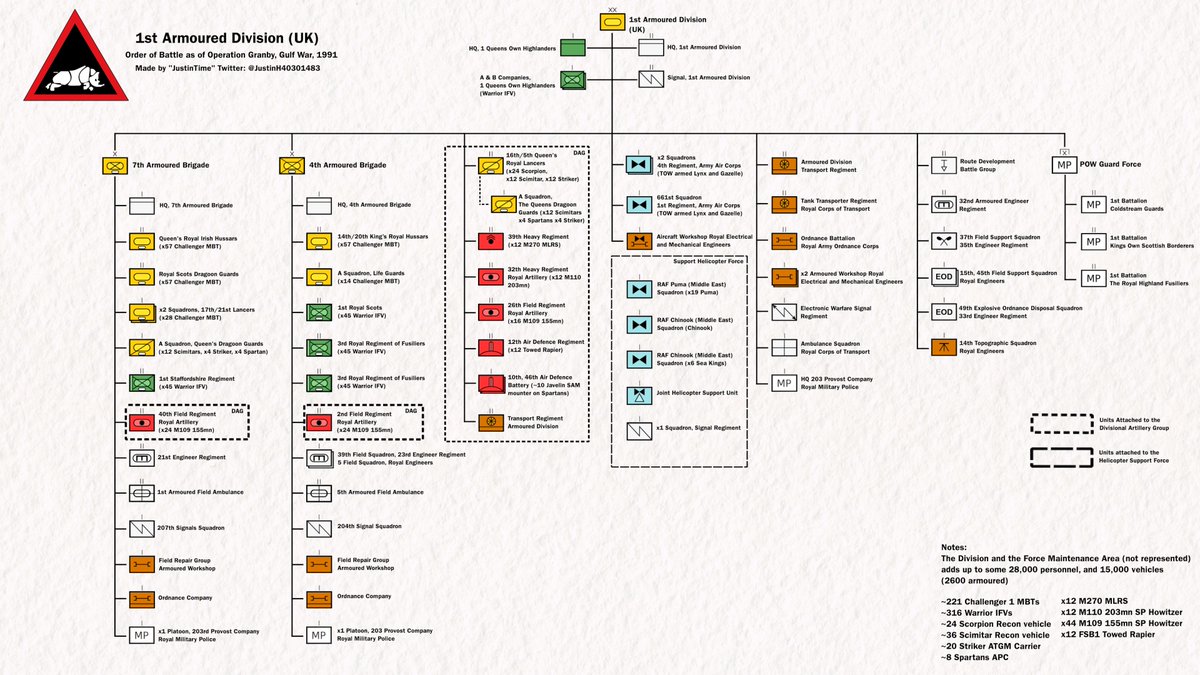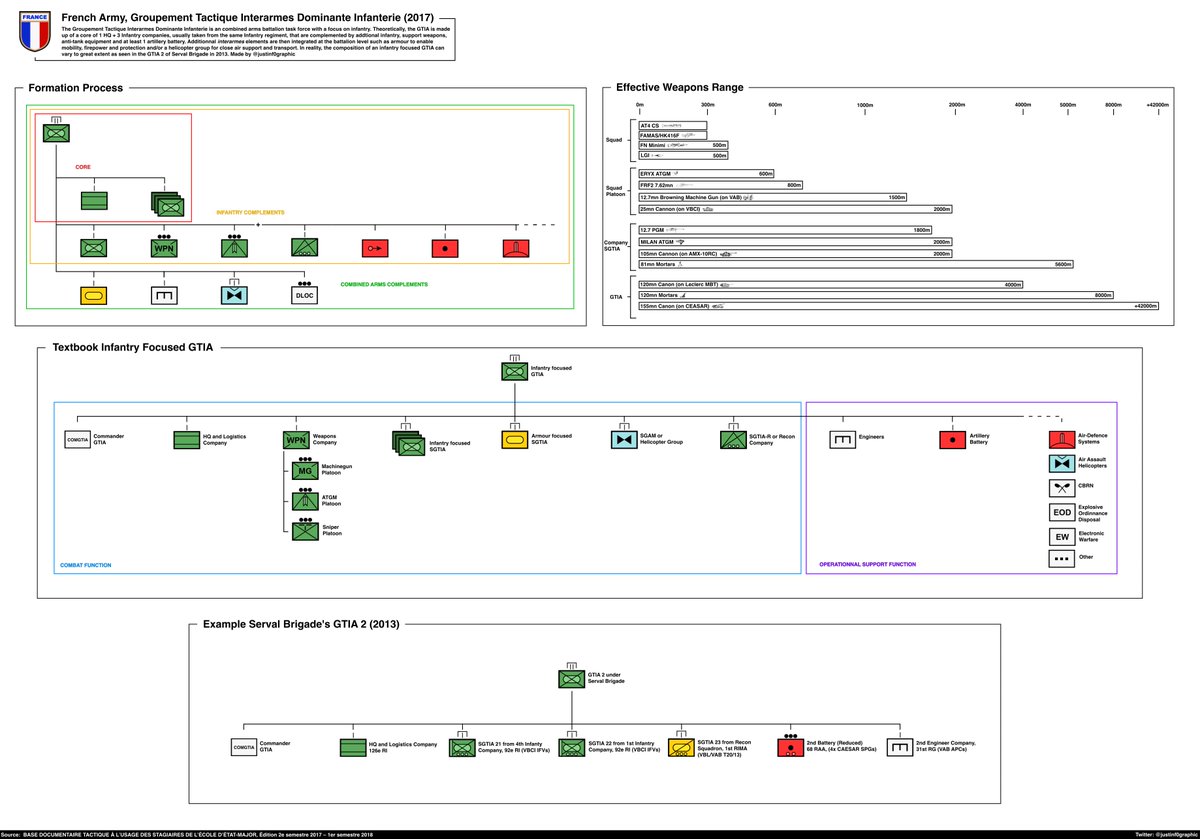1. In this thread, we will look at the 1st Armoured Division brought by the 🇬🇧during the 1991 Gulf War. More specifically, how it is structured, its purpose, and how it compares with the 🇫🇷Daguet Div that we looked at in the previous thread
#military #History #orderofbattle
#military #History #orderofbattle

2. Understanding the NATO symbology can be quite tricky, so here is a link to @battle_order website battleorder.org/icons Everything you need to know to understand this infographic is there
3. The 1st Arm is a heavy division which puts the emphasis on mobile armoured platforms with substantial firepower (Tanks, IFVs, SP Howitzers) to be able to manoeuvre and achieve breakthroughs. The Div has two manoeuvre brigades: the 7th and 4th Armoured 

4. The 7th Brig is a tank-heavy force with 142 tanks spread across two battalions, two squadrons + one recon squadron. There is also one battalion of mechanised infantry in 45 IFVs and one battalion of engineers tasked to remove any mines/obstacles in front of the force 



5. The primary purpose of this Brigade would be to pierce through the enemy’s defences to enable the rest of the (less armoured or heavy) force to move forward. 



6. Comparatively, the 4th Brigade has less than ½ the number of tanks of 7th Brigade. However, the 7th Brig has thrice the number of mechanised infantry battalions for a total of 135 IFVs. The different role of 4th Brigade explains the difference 

7. 4th Brigade would directly be behind 7th Brig, and its role would be to assault/clean up (depending on if there are still enemies) any enemy force remaining after 7th Brig breakthrough. This is only achievable by infantry, hence the emphasis put on mech inf in the Brigade 

8. To illustrate, this would look like a line of IFVs rolling up to a trench/building and dismounting its infantry sections. The infantry would start clearing the trenches/buildings by either eliminating or capturing the remaining enemies with the help of the IFV and Tanks 

9. The two brigades are supported by a plethora of artillery battalions with Multiple Launch Rocket Systems (MLRS) and Self-Propelled Howitzers (SP Howitzers), which constitute the Divisional Artillery Group 







10.The DAG also has a battalion + one squadron of armoured reconnaissance, which would be tasked to locate the enemy force and direct fire for the artillery battalions. Additionally, the div had one battalion + 2 batteries of air defence systems to counter aerial threats 





11. In terms of helicopter support, the force had three squadrons of TOW-armed Lynx and Gazelle helicopters operate deep in enemy lines or provide CAS. The Support helicopter Force also supported the division, although it was not attached to its command 





12. Some notable differences with the 🇫🇷 Daguet Div: the 1st armoured is much heavier and bigger. It is also almost entirely reliant on tracked vehicles which provide more mobility off-road but are more fuel consuming compared to the wheeled focus 🇫🇷 force 



13. Which brings me to logistics. The logistics needed to supply this kind of force is massive. The division required 400,000L of water, 500,000L of fuel and 5t of rations per DAY. I did not include it in the infographic, but an FMA had to be created to properly supply the force 



14. The 🇫🇷 and 🇬🇧 divisions represent the different structures between a Heavy and Light armoured div. Both are tailored for a specific mission: The Heavy can essentially obliterate and break through anything. The light can flank faster and operate in-depth more easily.
15. This is reflected in the task that each division was given. The Daguet Div with the 82nd AB were on the left flank while the 🇬🇧1st Armoured Division was deployed in the centre of the coalition’s line along with similar 🇺🇸 armoured divisions like the 1st and 3rd. 

16. Together, with 🇺🇸 units, they broke through the Saddam line and encircled the majority of the Iraqi force in Kuwait 





17. Some 300 Iraqi Tanks were destroyed/captured, and 7000 Iraqi soldiers were captured, + a vast number of trucks, IFVs and APCs. 19 British soldiers died during the operation, and 9 of them were killed in a friendly fire accident with a US A-10.
Ending notes: I will keep working on new infographics but move on from Gulf War Units. If you have any suggestions, please share them. That would be greatly appreciated.
I also am spending a lot of time on these threads, so for now, the objective is to maintain the pace of at least one thread per week.
• • •
Missing some Tweet in this thread? You can try to
force a refresh




















